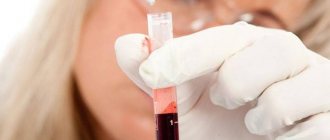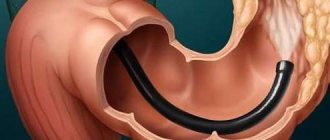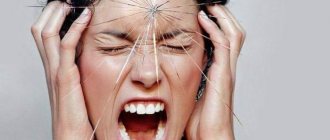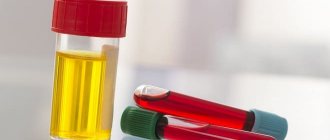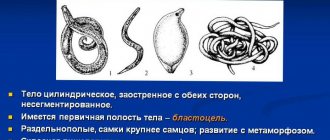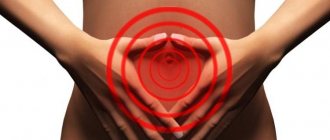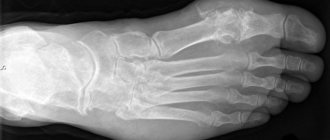The essence of the method
The somatoscopy method allows us to determine, first of all, the physical form of a person. However, the results of the examination largely depend on the experience and competence of the doctor. To obtain the most accurate data, somatoscopy is combined with additional instrumental diagnostic methods.
As a result, not only the physique and musculoskeletal system are assessed, but also fat accumulation (type, degree, character), sexual maturity (and gradual maturation), and characteristics of the skin and mucous membranes. The teeth are examined for the subsequent preparation of a formula.
Features of self-toscopy
Somatometry is carried out to obtain a general impression of a person’s physical potential. This is a rather subjective form of examination. The results largely depend on the degree of competence, experience, and professionalism of the person conducting the research.
To obtain the most reliable data, it is recommended to combine the methodical approach with instrumental measurements. The discipline includes the following aspects:
- Assessment of the state of the formations of the musculoskeletal system (shape of the skull and chest, anatomical and physiological features of the limbs, type and type of posture, degree of muscle development);
- Nature, degree, type of fat deposits on the human body;
- Analysis of the degree of puberty at this particular stage of life and, in general, the characteristics of the body from the perspective of gender;
- Identification of the characteristic features of the dermal tissue, as well as mucous membranes;
- Professional examination of teeth followed by the formation of a dental formula.
Basic physical parameters
Physical development is characterized by many factors. A person can rarely regulate them on his own. Physical development is based on genetics, then phenotype (after birth). Important factors are living conditions, the influence of the environment and society - all the necessary conditions for normal existence.
When determining physical development, it is assessed how healthy a person is considered in principle. The development of different skills depends on physique, strength, and lifestyle. For example, the fitness of the body is determined by the degree of development of the musculoskeletal system.
Many functional and morphological parameters, general characteristics, and a person’s ability to physically and mentally adapt subsequently depend on this. Based on the above, the basic parameters are determined.
Research methodology
Somatometry is a diagnosis that involves taking measurements of body parts. To obtain data that should be compared with anthropometry, measurements are taken on an empty stomach, in the morning, at the same time. Body length (sitting and standing) is assessed using a stadiometer or anthropometer, and limb length using a centimeter tape. With its help, the chest circumference is determined during exhalation, inhalation and pause.
The shoulder circumference is carried out in two states - when it is tense and relaxed. The hips are measured without muscle tension, in a standing position. Body weight is determined on a scale, lung capacity is determined using a spirometer.
The diagnosis then continues with an assessment of posture and skull. A person is examined in three positions - front, back and side. The body is examined for asymmetry in the shoulder region.
The position and shape of the head, skull, chest, limbs and pelvis are examined. First, the emphasis is on symmetry. When examining the skull, the difference between the anteroposterior and transverse distance is assessed. The form can be dolicho-, meso- and brachycephalic. Must be assessed:
- structure of the brain part of the skull;
- absence or presence of thickened seams;
- bone asymmetry;
- crown structure;
- protrusions in the area of the fontanel.
During the examination, the doctor evaluates the development of the body in general, taking into account all identified abnormalities. Puberty is assessed by hair growth in the armpits, face, and body. In girls, the growth of the mammary glands is additionally monitored; in boys, the development of the Adam's apple and changes in voice are monitored.
Somatoscopy
All topics in this section:
Development of sports medicine in the USSR The pronounced health-improving orientation of the fundamentally new system of physical education of the people being created in our country led to the formation and development of a new branch of medicine - medical
Organization of sports medicine Medical support for physical culture and sports is managed by health authorities with the active participation and assistance of sports organizations. Departmental medical service (DSO, departments, sports
General teaching about illness Health and illness are forms of life with all the diversity inherent in it. The preamble to the constitution of the World Health Organization defines health as “a state of complete physical, mental
Etiology and pathogenesis Etiology is the study of the causes and conditions of the occurrence of diseases (from the Greek “ethios” - cause, “logos” - doctrine). The causes of most diseases are extreme, harmful to organs
The role of heredity in pathology Heredity and constitution are properties of the body that influence the occurrence and development of the disease, that is, they play the role of both etiological and pathogenetic factors. These properties are closely interrelated
Reactivity Fig. 1. Diagram of types of body reactivity
Immunity Over the past 10-15 years, the problem of immunity has been seriously reconsidered. At present, it is fundamentally different from classical immunology, which considers immunity only as a non-
Allergy Allergy is the increased and qualitatively altered sensitivity of the body to allergens - substances, most of which have antigenic properties. At the same time, some allergens initially
Local circulatory disorders Local circulatory disorders are essential components of many diseases and pathological processes. Hyperemia is called local plethora, which develops in
Inflammation Inflammation is a typical pathological process. This is an evolutionarily developed, predominantly protective reaction of the body to damage, characterized by: alteration - damage and irritation
Local manifestations Fig. 3. Scheme of the relationship between the main processes of acute (burn)
General reactions General reactions during inflammation are caused by both etiological factors and pathogenetic factors of the inflammatory process itself (absorption of toxic substances into the blood, irritation of the receptor
Hypertrophy, atrophy and dystrophy One of the universal adaptive and compensatory processes in the body is hypertrophy. In its most general form, this term denotes an increase in the size of a particular organ, associated
The doctrine of physical development Physical development is understood as a complex of morphofunctional indicators that determine physical performance and the level of age-related biological development of an individual at the time of examination
Methods for studying physical development In the process of studying the physical development of people involved in physical exercises and sports, the following is carried out: assessment of the impact of systematic exercise on the level of physical fitness
Anthropometry Anthropometric measurements complement and clarify somatoscopy data and make it possible to more accurately determine the level of physical development of the subject. Repeated anthropometric measurements allow
Evaluation of the results of physical development research Physical development can be assessed using methods of anthropometric standards, correlations and indices. The method of anthropometric standards is the use of average values
Features of physical development and physique among representatives of various sports Athletics. Sports achievements in athletics are primarily influenced by total body size (height and weight). Tanner, who has conducted research on participants in many Olympic Games, has
Characteristics of the functional state of the athlete’s body <<< Previous chapter Return to contents Next chapter >>> To study the functional state of the nervous system, as well as the visceral systems of the athlete’s body
Functional state of an athlete's body and diagnostics of fitness The functional state of an athlete's body is studied during an in-depth medical examination (IME). To judge the functional state of the body, all methods are used, including
Nervous system Systematic sports and physical education improve the functional state of the nervous system and neuromuscular system, allowing the athlete to master complex motor skills
Central nervous system A targeted neurological history allows us to assess the basic properties of higher nervous activity. The strength of nervous processes can be judged by such criteria as courage, perseverance,
Peripheral nervous system As is known from the course of anatomy, the peripheral nervous system, which communicates the central nervous system with the musculoskeletal system, internal organs, skin, consists of 12 pairs of cranial nerves and 31
Sensory systems In the mechanisms of adaptation of the body to external and internal stimuli, a large role belongs to the sense organs - sensory systems, or analyzers. Perception is carried out in them (in receptors),
Autonomic nervous system The autonomic nervous system regulates the activity of all visceral systems of the body, participates in homeostatic reactions, performs an adaptive-trophic function, etc.
Neuromuscular system Systematic physical education and sports training lead to morphological and functional changes in the neuromuscular system. Hypertrophic restructuring of skeletal muscles
Cardiovascular system In the process of systematic sports training, functional adaptive changes in the work of the cardiovascular system develop, which are supported by morphological restructuring (“st.
Structural features of the sports heart Fig. 15. Teleroentgenograms of the heart: A - frontal projection; B - sagittal
Functional characteristics of the cardiovascular system The functional characteristics of the sports heart primarily relate to the intimate mechanisms of cardiac activity. Along with this, we can talk about some general functional features of sports
External respiration system In conditions of sports activity, extremely high demands are placed on the external respiration apparatus, the implementation of which ensures the effective functioning of the entire cardio-respiratory system.
Endocrine system The endocrine system includes the endocrine glands: pituitary gland, pineal gland, thyroid, parathyroid, goiter, pancreas, adrenal and sex glands. They are united by a common role in the regulation
Digestion The physical and chemical processing of food is a complex process that is carried out by the digestive system, which includes the oral cavity, esophagus, stomach, duodenum, then
Excretion The main organ of the excretory system is the kidneys. The weight of an adult kidney ranges from 120 to 200 g, length - 10-14 cm, width - 5-6 cm, thickness - 3-4 cm. The kidneys are located at level XII
Testing in the diagnosis of physical performance and functional readiness of athletes <<< Previous chapter Return to contents Next chapter >>> In functional diagnostics, an important role is played by information obtained using a variety of tests (
General problems of sports medical testing Functional tests began to be used in sports medicine at the beginning of the 20th century. Thus, in our country, the first functional test used to study athletes was the so-called
Determination of MPC As already mentioned (see Chapter IV), the assessment of maximum aerobic power is carried out by determining the MPC. Its value is calculated using various testing procedures in which it is achieved
Novakki Test This test is quite informative and, most importantly, extremely simple. To carry it out, you only need a bicycle ergometer. The idea of the test is to determine the time during which the subject
Submaximal test pwc170 The test is designed to determine the physical performance of athletes and athletes. The World Health Organization designates this test as W170. Physical
Tests with post-exercise recording of output signals This section discusses tests proposed relatively long ago, when sports medicine did not have equipment that would allow recording various physiological indicators not
Test by S.P. Letunov The test is designed to assess the adaptation of the athlete’s body to speed work and endurance work. It should be noted that the use of testing to assess physical qualities has been proposed
Harvard step test Using the Harvard step test, recovery processes after dosed muscular work are quantitatively assessed. Physical activity is specified in the form of climbing a step high
Straining test Straining as a strong input influence has been known in functional diagnostics for a very long time. Back in 1704, the Italian doctor Antonio Valsalva proposed a straining test, which used
Orthostatic test The idea of using a change in body position in space as an input effect to study the functional state of the body has been implemented in the practice of functional diagnostics for a long time
Pharmacological tests Pharmacological tests are carried out only by a doctor. They are intended for differentiated diagnosis of diseases, pathological and pre-pathological conditions. Test with atropine using
Medical and pedagogical observations during training sessions Medical and pedagogical observations (MPN) are understood as studies conducted jointly by a doctor and a trainer (physical education teacher) in order to assess the impact of physical training on the body.
Forms of organization of medical and pedagogical observations of VPs are carried out during operational, current and stage examinations that are part of the structure of medical and biological support for the training of athletes. Forms of VPN organization used in these services
Research methods used in medical and pedagogical observations Various research methods can be used during VPN, which have already been partially discussed in previous chapters. VPNs are of particular value if methods are used simultaneously
Functional tests during medical and pedagogical observations For different forms of VP, various functional tests and tests are carried out to assess the effect of exercise on the athlete’s body and the level of his preparedness.
Medical control at competitions Competitions place extreme demands on the athlete’s body. Therefore, medical support for competitions, aimed at preserving the health of athletes, preventing injuries and care
Medical support for competitions Medical support for competitions is provided by the medical and physical education service and territorial medical and preventive healthcare institutions at the request of the competition organizers.
Anti-doping control An integral part of medical support at official all-Union and international competitions is anti-doping control. The fight against doping is of great importance for the protection of sports health
Gender control Women participating in the Olympic Games, world and national championships are subject to gender control. The purpose of this control is to exclude the participation in women's competitions of persons with recognized
Medical and pedagogical observations during training sessions Medical and pedagogical observations (MPN) are understood as studies conducted jointly by a doctor and a trainer (physical education teacher) in order to assess the impact of physical training on the body.
Forms of organization of medical and pedagogical observations of VPs are carried out during operational, current and stage examinations that are part of the structure of medical and biological support for the training of athletes. Forms of VPN organization used in these services
Research methods used in medical and pedagogical observations Various research methods can be used during VPN, which have already been partially discussed in previous chapters. VPNs are of particular value if methods are used simultaneously
Functional tests during medical and pedagogical observations For different forms of VP, various functional tests and tests are carried out to assess the effect of exercise on the athlete’s body and the level of his preparedness.
Medical control at competitions Competitions place extreme demands on the athlete’s body. Therefore, medical support for competitions, aimed at preserving the health of athletes, preventing injuries and care
Medical support for competitions Medical support for competitions is provided by the medical and physical education service and territorial medical and preventive healthcare institutions at the request of the competition organizers.
Anti-doping control An integral part of medical support at official all-Union and international competitions is anti-doping control. The fight against doping is of great importance for the protection of sports health
Gender control Women participating in the Olympic Games, world and national championships are subject to gender control. The purpose of this control is to exclude the participation in women's competitions of persons with recognized
The health-improving significance of mass physical culture The health-improving effect of physical exercise on the human body has been known since ancient times. Their great importance for fighting diseases and prolonging life was pointed out by many generations of Greek
Medical monitoring of children, adolescents, boys and girls Physical education and sports in childhood, adolescence and youth stimulate the growth and development of the body, metabolism, strengthen health and physical development, increase the functioning
Medical supervision of young athletes Sports training of school-age children involves solving closely interrelated problems - health improvement, education and physical improvement. Tools and methods used in preparation
Medical issues of sports orientation and selection One of the important sections of the joint work of a doctor and a coach (teacher) is sports orientation and sports selection. Choose for each teenager the type of sports activity that is most relevant
Medical supervision of adults involved in physical education Physical exercises and physical activity are crucial not only in the fight against diseases, their prevention, promotion of health and physical development, but also in slowing down the processes of aging.
Self-control in mass physical culture The intensive development of mass physical culture in our country has led to a significant increase in the role of self-control, the data of which are of great assistance to medical control over those involved.
Medical control of women Physical education classes for women and girls should be carried out taking into account the anatomical and physiological characteristics of their body, as well as the biological function of motherhood. Therefore, one of the important tasks
Medical means of restoring sports performance <<< Previous chapter Return to content Next chapter >>> Restoring sports performance and normal functioning of the body after training and
General principles for using recovery tools When using recovery products, complexity is important. We are talking about the combined use of funds from all three groups and different funds from one group in order to simultaneously influence all
Specialized nutrition Specialized nutrition for athletes plays a large part in the complex of medical rehabilitation products. Nutrition is the most important natural means of replenishing plastic
Pharmacological means of recovery To control life processes in extreme conditions and correct fatigue, biologically active compounds are used, mainly substances involved in natural metabolic processes.
Physical means of recovery Physical factors with high biological and therapeutic activity are used in sports medicine to prevent and treat diseases and injuries, harden the body, accelerate recovery
General characteristics of diseases in athletes In recent years, convincing data have been accumulated in sports medicine on the great importance of physical activity for improving human health, preventing cardiovascular diseases, increasing
General characteristics of sports injuries Trauma is damage with or without disruption of tissue integrity caused by any external influence. There are the following types of injuries: industrial, household, transport,
Analysis of the causes, mechanisms and prevention of sports injuries in various sports The number of injuries during sports should be reduced to a minimum. Not only doctors, but also every teacher and every coach should actively participate in the prevention of sports injuries. For this
Damage to the skin The most common injuries to the skin include abrasions, abrasions and wounds. Abrasion is damage to the skin that occurs as a result of prolonged friction against
Injuries of the musculoskeletal system Among the injuries of the musculoskeletal system, the most common are bruises, damage to the capsular ligamentous system, sprains, ruptures of muscles, tendons and fascia, bone fractures, subluxations and dislocations
Nervous system injuries Most sports injuries to the skull are accompanied by brain injuries, which are divided into concussion, brain contusion and brain compression. Any of these injuries causes one or another
Injuries to internal organs Strong blows to the abdomen, chest, lumbar region, perineum, especially if they are accompanied by fractures of the ribs, sternum, pelvic bones, can lead to damage to the liver, spleen
Injuries to the nose, ear, larynx, teeth and eyes Injuries to the nose can be caused by a blow from a boxing glove, an opponent's head, a ball, a stick, a bruise from falling face down, etc. This may result in nosebleeds or a fracture
Overtraining and overexertion In the process of regular training, the functional capabilities of the athlete's body expand, and a gradual formation and development of fitness occurs. The basis of fitness development is
Acute pathological conditions Acute pathological conditions by their nature are a complex of pathological reactions, processes and conditions discussed in Chapter. II. This type of condition disrupts general functioning.
Fainting Fainting includes cases with short-term complete or partial loss of consciousness. Prolonged loss or stupefaction of consciousness is referred to as “coma.” Fainting conditions
Acute myocardial overstrain Acute myocardial overstrain develops in direct connection with intense muscular work. It can have a wide variety of manifestations - from pain in the heart area to acute cardiac failure.
Hypoglycemic state Hypoglycemic state is associated with a decrease in blood glucose levels - hypoglycemia. This acute pathological condition develops mainly during long and short running competitions.
Heat and sunstroke Heat and sunstroke (especially heat) are conditions that threaten human life. Heat stroke occurs due to a violation of heat transfer. As is known, heat transfer to the organ
Drowning Swimming is increasingly being introduced into mass physical culture. In this regard, teachers and trainers of water sports, as well as persons working in pioneer camps located near rivers, lakes
Average values of signs of physical development of athletes Sports specialization Anthropometric indicators Total body dimensions Diameters, cm length
Converting the time spent on 30 pulse beats into heart rate per minute Time, with heart rate, beats/min Time, with heart rate, beats/min Time, with heart rate, beats/min 22.0
Age standards for starting various sports in children's sports schools Age, years Type of sport (initial training) 7-8 Swimming, gymnastics 8-9 Figure skating
Approximate timing of athletes’ admission to training sessions after injuries to the musculoskeletal system Nature of injury Timing for resumption of training Clavicle fractures 6-8 weeks
Units of measurement of physical quantities used in sports medicine Name of the physical quantity Unit of measurement Designation and name in the SI system Conversion to other units of measure
Condition of the musculoskeletal system and assessment of body type
During an external examination, somatoscopy makes it possible to determine the body type. There are three main forms:
- normosthenic (proportional);
- asthenic (characterized by a violation of proportions to longitudinal dimensions);
- hypersthenic (asymmetry to transverse parameters).
However, just determining your body type is not enough. For a complete analysis, all parameters must be measured. The leading ones are: the shape of the abdomen, legs, chest, bones, fat and muscle tissue.
Rib cage
To correctly assess the chest, it is examined from two positions - frontal and sagittal. There are 3 main forms:
- Cylindrical is the most common. Characterized by smooth truncation of apertures (lower and upper).
- Flat is usually observed in young children or during adolescence. At the same time, the muscles are not very developed. In adults, excessive flatness accompanies a number of diseases that can lead to complete asthenia of the body.
- The conical shape is normal. It is typical for athletes or people who experience heavy physical activity. However, the conical shape can also characterize pathologies in people who are obese or have advanced pulmonary diseases.
Health problems are also indicated by deformations accompanied by asymmetry of the skeletal system or organs that are connected to the chest.
Posture is the position in which a person stands at ease. In this case, the head and body are straight and held in this position without muscle tension. Normal posture should be straight, without curvature of the spine in any direction. Bends in the cervical and lumbar region are allowed (in the range of 3-5 centimeters). In this case, the shoulders should be pulled back and the head raised. The stomach is pulled in and the chest protrudes slightly. Pathological changes in posture:
- By over-straightening, the curves are smoothed out. However, the functioning of the spine is disrupted. A person’s gait changes, and any actions that are caused by sudden movements, walking or physical effort become difficult.
- With kyphotic posture, the lumbar and cervical regions are enlarged, the shoulders and head drop down, and the stomach protrudes forward. At the same time, there is a curvature of the spine.
- Lordotic posture is characterized by increased curvature in the lumbar region. The stomach protrudes forward, and the upper body is slightly thrown back. This posture may be normal in preschoolers, but in adults it indicates pathological processes.
When stooping, the cervical curve is increased, and the lumbar curve is smoothed. The shoulders are lowered and the head is tilted forward. This posture is often found in teenagers who “hunch over” in an attempt to appear shorter and smooth out their angularity.
Lower limbs
The lower limbs are examined in a standing position. Normally, the legs touch at the knees and the middle of the ankles (their inner part).
X-shaped - when the joints overlap each other, but the ankles do not touch. More often this form is typical for preschoolers. Subsequently, the legs acquire a normal appearance. The X form occurs in obese people (due to increased fat deposition in the thighs).
O-shaped limbs when the knees do not touch. This can occur against the background of pathologies of the skeletal system. If this is a sign of rickets, then the deformities are determined by palpation. Thickenings in the form of bracelets are felt. With rickets, the legs and hips (saber-shaped limbs) can also be bent.
Feet
When diagnosing the feet, the width of the isthmus, the vertical of the tendon axes, and the supporting surfaces are determined. Additionally, the heels are examined during loading. There are three types of feet:
- Norm . It is characterized by a narrow isthmus, the vertical axes are on the same line and perpendicular to the supporting surface.
- Flattened . It is distinguished by a wide isthmus, the outer edge is more convex. The verticals of the axes are perpendicular to the supporting surface.
- Flat . The isthmus is located across the entire width of the foot (or most of it), the vertical axes and the Achilles tendon form an angle.
To ensure reliable results, a fingerprint is required. The final results are obtained using special calculations. The first method is according to Strieter, the second is according to Yaralov-Yaralyants.
Assessment of the condition of the spine and muscles
The spine is examined in the sagittal and frontal planes. Curves (including, if any, pathological) and the degree of scoliosis are assessed. Violations are divided into three degrees:
- The first is functional deformation, easily corrected with physical activity and muscle tension.
- The second is that the violations are persistent and do not appear after muscle strain.
- Third, deformations of the pelvic and chest bones are additionally detected.
When assessing muscles, the condition and amount of muscle tissue is taken into account. It may be underdeveloped, elasticity and relief are absent, the stomach sags. The average degree of development, when the listed indicators are more pronounced. At the same time, the stomach is tightened. Third degree – well-developed muscles.
Body fat assessment
The level of fat accumulation can be determined by bone and muscle relief (its severity). It is viewed visually. The degree of fat accumulation is determined by measuring general body parameters and the number of folds present. They are divided into three categories. The first is up to 5 mm, the second is 6-9 mm, the third is up to 10-15 in children and up to 10-22 mm in adults.
Spine assessment
Scoliosis detection
Its examination takes place in the sagittal (lateral) and frontal (direct) planes. In the lateral projection, the normal curves of the spine are assessed, as well as the presence of pathological curves, lordosis and kyphosis. The degree of scoliosis is assessed in the straight, frontal plane. The curvature of the spine can be to the left or right.
Violations can be of several degrees:
- I degree – functional disorders that can be easily corrected through physical activity. They also disappear with muscle tension.
- II degree – disorders are more persistent and do not disappear with normal muscle tension.
- III degree - persistent disorders are accompanied by deformations of the bone apparatus, in particular, the chest and pelvic bones.
Examination of teeth and preparation of dental formula
The appearance of teeth is one of the indicators of proper development. The information obtained during the examination of the mouth is important for the final conclusion. From the base point and age-related changes, several periods are distinguished:
- Up to 2.5 years, when baby teeth are actively erupting.
- Age 2.5-6.5 years. During this period, teething ends and the dentition is formed.
- From 6.5-12 years old, milk ones change to permanent ones.
During the examination, the number of incisors, their shape, color, and location are specified. It is important what condition the hard tissues are in, whether there are inflammatory or pathological processes. All healthy and diseased teeth are identified. As a result, an individual dental formula is drawn up.
Assessment of the condition of mucous membranes and skin
To check the mucous membranes, the gums and lower eyelids are examined. Their color is taken into account (pink, jaundiced, pale, etc.). The mucous membranes are examined for the presence of hemorrhages or plaque.
Features of the skin
Skin is assessed based on external characteristics
| Color | Normally pink. However, it may be icteric, pale, cyanotic. Sometimes partial or general hyperemia is observed, and the venous network is clearly visible. |
| Pigment | Can be localized on any part of the body. |
| Focal skin deposits | Changing its surface, color. Subcutaneous hemorrhages, erythema, eczema or peeling are visible. Striae, purulent or ulcerative lesions may be detected. |
| Elasticity | The skin lifts. If the fold disappears quickly, the elasticity is normal. If there are violations, the skin does not straighten out for a long time. |
| Turgor | A small area of soft tissue is compressed on the inside of the thigh. With pronounced turgor, resistance is felt; with weak turgor, it is absent. |
| Humidity | The skin may be dry, moist, or sweaty. |
The skin is also examined for the presence of scars. They may appear after injury or surgery.
Assessment of physical development is necessary to correct any disorders that may become apparent in childhood. Many deformations can be easily eliminated. Violations may be associated with rickets. If treatment is not started in a timely manner, this can lead to serious consequences and disability. Therefore, children's parameters are assessed more carefully.
Rib cage
To fully assess the parameters and shape of the chest, the formation is examined from the sagittal and frontal positions. There are three standard chest shapes:
- Cylindrical. The most common form. Features smooth truncation of the upper and lower apertures;
- The flat shape is more common in children and adolescents who do not have particularly developed muscles. In older age, excessive flatness indicates a number of pathologies that can occur in the body and lead to total asthenia of the entire body;
- The conical chest is recognized as a normal variant. Most often, this form is characteristic of people actively involved in sports or heavy physical labor. As a manifestation of pathology, conical cells are observed in people with severe obesity or advanced forms of pulmonary diseases.
Deformations that manifest themselves as very noticeable asymmetric phenomena also indicate problems with human health. We are talking about ailments of the entire skeletal system or problems associated exclusively with the chest organs.

